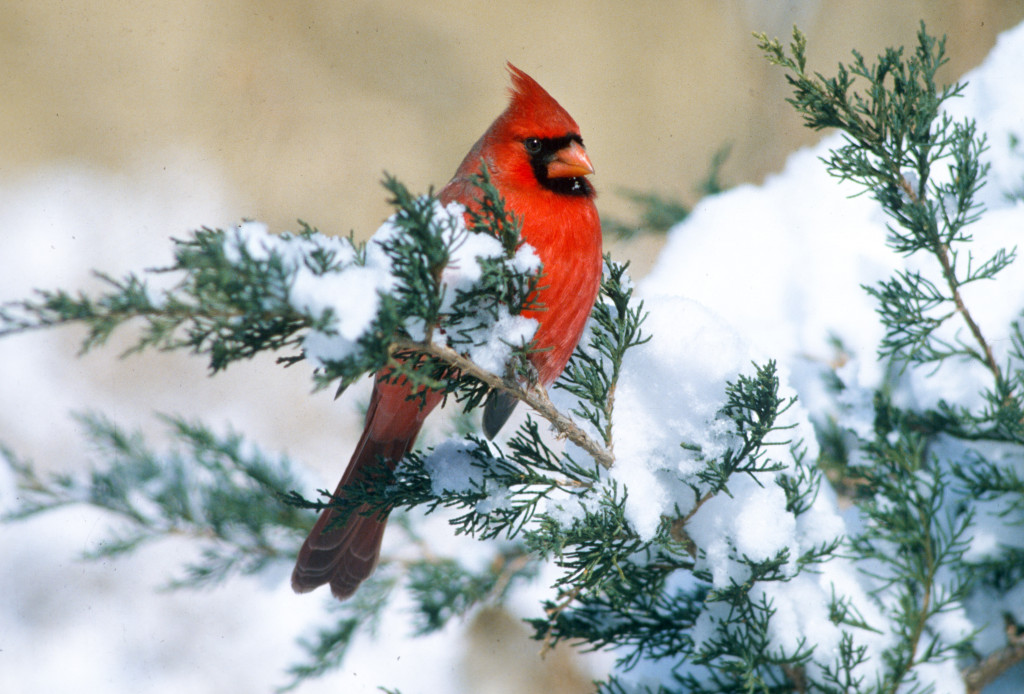
By Alie Mayes, Community Science Specialist
This article is part of the Nebraska Nature in Color series. This limited series will run monthly December 2023- June 2024.
When contemplating the colors of December in Nebraska, the hues that come to mind are the browns of a sleepy landscape and the blanket of white that, at times, covers this seemingly barren terrain. But soon after, the color red also comes to mind, such as the bright splash of a northern cardinal, the last of the red berries still clinging and covered in ice, or a red fox crossing the snow.
More than anything though, red in December reminds me of sipping warm tea from a red owl mug — a present from my Nan. You see, I am the “bird person” in my family, though I had no intention of holding such a title. But somewhere along my journey in learning and exploring nature, and crossing paths with the right combination of unique birds, such as the black-necked stilt and American avocet, contagious enthusiasm hit me. Then the flow of bird gifts for every birthday and Christmas naturally followed.
This love for birds has been the catalyst of many adventures, including participation in the Audubon Christmas Bird Count. An annual community science project, the CBC relies on volunteers to count all the birds they can find in their area and report the results via eBird. I have participated in various capacities for this birdy event: I have “CBC’d” with adults, children, friends and my partner. One year, I was even able to do a CBC back home with my folks, driving miles of the icy roads from my youth. Searching for birds on that crisp, winter day is one of my favorite memories with my parents from recent years.
Often, birdy memories spur more birdy memories. And birds of red are memorable, especially in the winter months when they are one of the brightest things on the landscape. This winter, look for the brilliant feathers of a red-headed woodpecker, or red-tailed hawks posting on road signs scanning for food, or red-breasted nuthatches caching seeds in the bark of a tree, or the namesake wax-red feather tips on a cedar waxwing. And the red-crossbill—an irruptive finch that follows the abundance of conifer seeds— has a specialized overlapping beak, which allows it to retrieve seeds from pinecones.
The only thing even more memorable than the red birds of December are the memories you’ll make while watching them. Go birding with family, friends or enjoy the solace for your own this winter.
